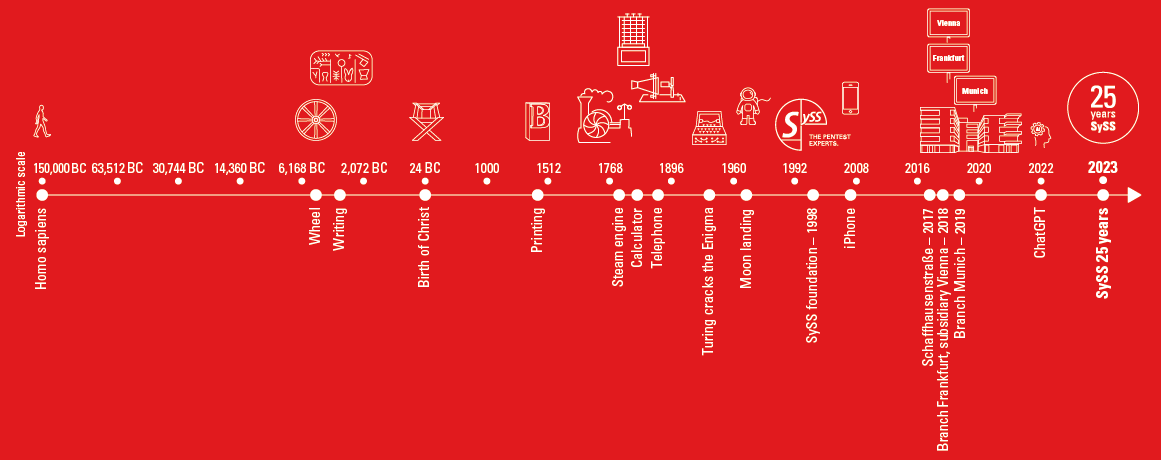Sector IT: a sheer male domain? Wrong!
An essay by Regina Nazarenko on the under-representation of and hurdles for women in the IT sector and on the benefits companies derive from diversity in the long term

Current data
Computer science and digital literacy are on the curriculum of all educational institutions in today's society and have become an integral part of our increasingly connected world. The importance of digitalization and its extent were recently summarized in the study “Gesellschaft 5.0" conducted by Prognos & Capgemini – a digital transformation of the working world has been taking place for some time and will continue to spread to all areas in the future: The digital age has long since arrived. And where technological progress and the expansion of digital infrastructure are becoming more and more important, there is an increasing demand for skilled workers in this area.
The IT business is flourishing. Companies have been desperately looking for skilled workers for a long time and IT specialist training is number 2 of the most popular training occupations in Germany, at least among men. With regard to women, however, the statistics reveal completely different figures: The percentage of women in IT occupations in Germany in 2021 was just 19 % and only ranged on the 23rd place compared to the EU. In computer science courses, 21.8 % of students were female in the same year. Regarding cyber security – the core of SySS –, there has been an increase in that respect: The number of female specialists worldwide has increased from 11 % to 24 % in recent years.
Ahead of their time – pioneers in computer science
Female influence and inventiveness has always infused the jungle of computer science, which laid many foundations for today's technologies.
Countess Ada Lovelace, daughter of the renowned English poet Lord Byron, pondered on computer programs 100 years before the actual computer was invented. In her “Note A,” she described how machines or, more specifically, Charles Babbage's “Analytical Engine” – a mechanical calculating machine – could efficiently process speech, graphics, but also sounds. Although Ada enjoyed a very extensive education, recognition of her detailed explanations, however, was still lacking due to social factors at the time.
Grace Hopper (also known as “Grandma COBOL”) laid another foundation for the further development of technology in 1940 by revolutionizing communication with machines and processing machine code in understandable language instead of just using binary codes. She was also part of the Mark I, Mark II and UNIVAC projects and, among other things, involved in the creation of the first compiler (A-0) – the first moon landing could now proceed. Fun fact: The term “bug”, which is still widely known today, was introduced by her. The namesake here was actually, as the name suggests, a real insect that lost its way in her machine and caused damage.
There are also other well-known examples in the history of information technology: be it Mary Kenneth Keller, Frances E. Allen or Annie J. Easley, they all – and many others – have enriched research with their knowledge and contributed to revolutionizing computer science.
There is neither a shortage of female role models in fictional works. An IT security consultant at SySS, for example, was fascinated by the protagonist Lisbeth Salander of the book trilogy “Millennium” in her youth that she began to study C programming as a hobby. One part of the book, for instance, describes how Lisbeth hacks an alarm system at a house and exploits a buffer overflow vulnerability. These parts of the book were written in a very cryptic language, interspersed with IT vocabulary and specific features of C programming. Later, our current colleague decided to take root in the jungle of IT – and with absolute success at SySS.
Last but not least, the existence of these numerous role models and their influence crack the stereotypes that all positions in IT seem to be reserved for men. In practice, most places in computer science courses and IT occupations are taken by men.
Work-life balance in (IT security) consulting
At SySS, on-site projects and business trips are part of the agenda for many employees; a similar situation can be observed with other (IT security) consulting companies. Are working conditions specific to consulting firms responsible for the under-representation of women? An analysis carried out by Termer & Nissen addressed the question of how IT consulting can be made more attractive to women. “From the point of view of female IT consultants, the organization of working hours should be an essential goal of WLB [work-life balance] measures. These include the introduction of flexible working time models, flexibility when switching between working time models and the option of a flexible short-term exit from work.”
The study was carried out in 2011, and much has happened since then – especially after the corona pandemic. Work and private life are becoming ever more compatible. Generous working hours in the form of flextime allow flexible time management. In addition, the boundaries of traditional gender and family roles become increasingly blurred. More and more parents alternate taking parental leave – meaning that there is enough time for women to pursue their career and to balance both sides.
Home office concepts, partially available up to 100 % in IT, also facilitate everyday life. Business meetings are increasingly held remotely; physical presence is not always necessary anymore. Part-time is also possible in consulting, even though it is more difficult in IT security consulting since business trips cannot be avoided altogether. At SySS, for example, men are also employed part-time and frequently take parental leave to assist their partners.
ERROR 404: Diversity Not Found
In order to increase the relatively smallish number of women in the IT sector and to promote them to leading positions in digitalization, a number of campaigns have been launched – all with the same goal: more diversity and strengthening the role of women in the digital transformation. With #FrauWirktDigital, the council “Women4Cyber” or the alliance “SheTransformsIT”, which was founded in 2020 for the Federal Government's Digital Summit, the first steps have been taken in this direction. More and more initiatives are springing up and seizing the opportunity to advance digital transformation, also in terms of diversity. The results are disappointing: Diversity is growing, but only very slowly.
However, the importance and awareness of cyber security in society and companies, even among smaller ones, has increased – and so has the already notorious shortage of skilled workers. This is because the demand for IT services is growing, but interest remains one-dimensional. In 2022, there were around 137.000 vacant IT jobs, so specialists regularly receive recruitment offers. If there were greater interest among women, they would also cover more jobs, which would to some degree diminish a shortage of skilled workers.
A greater diversity of gender in IT also bears other benefits. Studies show that mixed teams – also with regard to age, cultural background, etc. – lead to better, more creative and more sophisticated results and provide more perspectives on the same topic. The working environment therefore thrives under such conditions and leads to joint success in many ways. Most applications and conceptualizations are created through teamwork, consisting of an ongoing discourse in which many ideas are either discarded or re-incorporated over time. More diversity means more ideas and therefore greater satisfaction among a wider range of potential prospects and participants. “During elementary and secondary education, there is no evidence that boys are better at math or computer science than their female classmates,” says an author of the recent McKinsey survey on the shortage of skilled workers in the IT sector. Each gender offers specialist knowledge, soft skills, technical skill and logical understanding, everything is equally important and indispensable in a corporate context – and not of economic disadvantage either.
Most companies have recently recognized this; no one is deliberately excluded. On the contrary, a higher proportion of women is welcomed. However, change is a long way off. Many ICT (information and communication technology) companies are trying to speed up this process; in many places, the introduction of a specific quota for women is pursued. In the coming years, every fourth IT position in Germany should be filled by a woman, at least as a temporary solution.
The funnel effect – lack of female managers
The higher the position is in the corporate hierarchy, the lower the proportion of women – a funnel effect can be observed. According to a study conducted by the association eco, women occupied around 9 % of management positions in the area of software and programming in 2020. Here, too, the fear is too great that one would not be taken seriously as a woman in such an authoritarian position. After all, women also grow up with stereotypes against women – it is stereotypically said that women are too emotional, not suitable for management and are technically unskilled. At some point, one is tempted to believe that is true. Overt sexism is not as it used to be, but a great many people still experience discrimination based on sex, even within groups of the same sex.
A female team leader and IT security consultant at SySS reports that it took her a long time to radiate self-confidence and the necessary authority to manage an entire team and to be noticed in general. She talks about a difficult sales meeting at the beginning of her career. In this meeting, she was neither heard nor able to assert herself – even after repeating the content and reworking the topic several times. Then she asked a male colleague to address the matter and the conversation turned out to be successful – he, however, only repeated the facts explained previously by her in very similar words. These days, she realizes that she is heard more often. In most cases, it is not a lack of competence which is responsible that authority not be perceived.
Even today, it is still important to pay attention to small details in order to be taken seriously and to be noticed, she emphasizes. It is always an advantage, for example, to hold negotiations with customers or meetings literally at “eye level,” i.e. in a sitting position. Differences in height may otherwise create a subliminal position of power. Also, gender-connoted colors in society such as pink, which is often considered dubious and whose wearer is also considered less intelligent and mellow, should rather be avoided. These colors continue to evoke outdated thought patterns in society. It is, however, becoming more and more apparent that they are resolving.
Being the only woman in the room or in a meeting can also be positive: Ideas and suggestions may be more memorable because she stands out from the crowd and may therefore be more convincing.
Getting to the root of the problem – changing thought patterns
It is strange indeed. All of us, regardless of gender, use digital services and the digital age has long since arrived. However, men are still more likely to found innovative IT companies and develop new technologies. In innovative startups with digital business models, on the other hand, only 15.7 % of women in Germany are founding members. For individual start-ups, it is only 10.9 %. However, more diversity would also lead to an optimization in terms of covering the interests and meeting the wishes of all genders.
The shortage of female IT (managing) staff will persist unless the lecture halls in computer science courses and classrooms in schools soon start to fill up with more genders. Although there is an increase in career changers in the IT sector, most come from traditional training occupations and educational institutions. Initiatives such as “Komm, mach MINT.“, which aim to “provide a realistic picture of engineering and scientific professions” and “to get young women excited about science and technology courses”, only led to limited success. The percentage of women studying computer science has so far only increased slightly.
At the University of Furtwangen, a women-only IT course was even set up temporarily, a young female professional at SySS tells us. It included its own educational qualification, a well-equipped new building and the best conditions – but the content was the same as in the usual computer science courses. This study course no longer exists today. The reputation was too bad, she says. And discriminatory jokes about choosing this course were also commonplace.
It is a two-edged sword: For many, all-women courses offer a protected space in which women can fully concentrate on their studies and do not have to be afraid of becoming victims of discrimination and male chauvinism. The female SySS consultants surveyed, on the other hand, are somewhat more critical of this. In their opinion, the problem starts precisely at the point where a conscious separation between sexes takes place. This division, in fact, accentuates the prejudice that women cannot keep up with their male fellow students and are therefore in need of separate “tutoring” and special support, i.e. they are deliberately excluded. It would make more sense to focus on a change of established thought patterns and awareness, in which equal opportunities and fairness are the goal and genders do not play a role at all – from childhood onwards.
A change of perspective – promoting the personal strength profile
Many female SySS colleagues report that they had received a lot of criticism when they chose their profession, even to the attempt to prevent them from studying computer science. “This is too difficult for women!” and “leave that to the men” were some of the comments. The courses were difficult, they tell, but many men also failed. They did not allow themselves to be dissuaded from their path and continued to do what inspired them. “Girls must be motivated from an early age to build something and not just to play with dolls”, they put it straight. In fact, aversion and affection for certain topics are indoctrinated very early on by social ideas. Support and backing are the most important things in this matter. The focus should be laid on paving the way for people – whether they be men, women or non-binary – who are enthusiastic and motivated and supporting them on every level. A disintegration of gender roles, or at least previous views of gender-specific skills, is already in progress. However, we will probably need a few more generations to consolidate these new thought patterns.
With this in mind: Cheers to women – and men... and to everyone!
DO NOT HESITATE TO GET IN TOUCH +49 (0)7071 - 40 78 56-0 or anfrage@syss.de | OUTSIDE REGULAR OFFICE Hours CALL +49 (0)7071 - 40 78 56-99
As a framework contract customer please dial the provided on-call service number
DO NOT HESITATE TO GET IN TOUCH +49 (0)7071 - 40 78 56-0 or anfrage@syss.de
OUTSIDE REGULAR OFFICE Hours CALL +49 (0)7071 - 40 78 56-99
As a framework contract customer please dial the provided on-call service number
GET IN TOUCH
+49 (0)7071 - 40 78 56-0 or anfrage@syss.de
OUTSIDE REGULAR OFFICE Hours
+49 (0)7071 - 40 78 56-99
As a framework contract customer please dial the provided on-call service number





